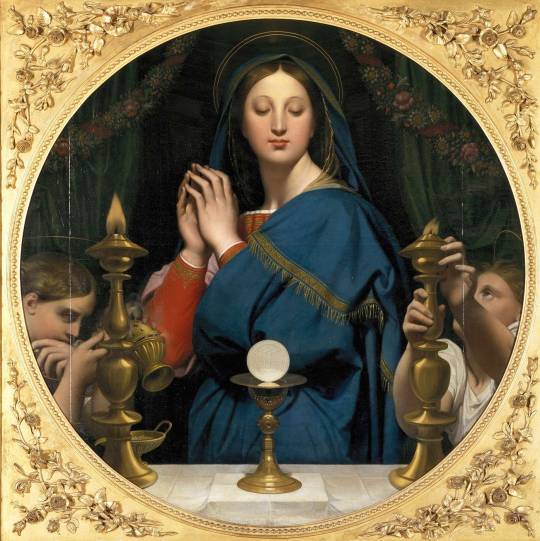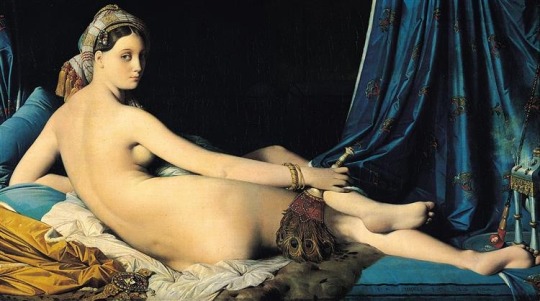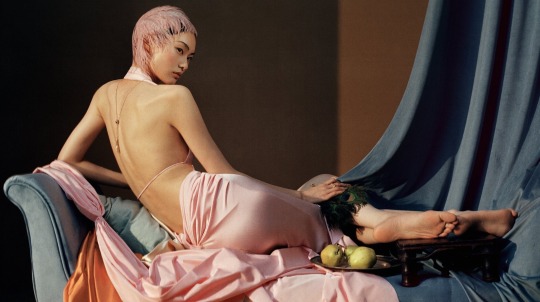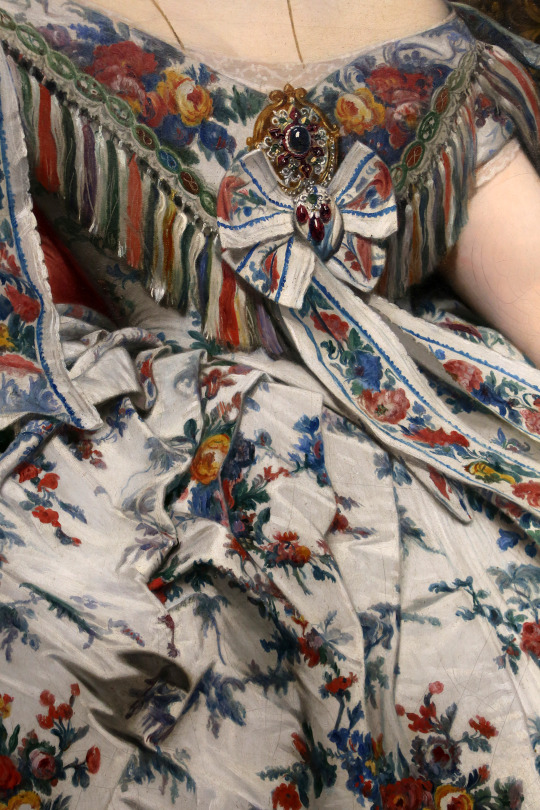#Jean Auguste Dominique Ingres
Text

Oedipus and the Sphinx by Jean-Auguste-Dominique Ingres (1808)
#jean auguste dominique ingres#art#paintings#fine art#neoclassical#neoclassicism#neoclassical art#painting#french art#french artist#mythology#greek mythology#oedipus#sphinx#classic art
457 notes
·
View notes
Text

Virgin Adoring the Eucharist, Jean Auguste Dominique Ingres (1854)
#Jesus#mary#Eucharist#Catholic#god#art#painting#jean auguste dominique ingres#French#French art#catholicism
881 notes
·
View notes
Text
Júpiter y Tetis, por Dominique Ingres

#classic art#traditional painting#traditional art#art history#art detail#classical art#19th century art#art details#oil painting#art#artwork#arte#1800s art#1800s#jean auguste dominique ingres#oil on canvas#oil paintings
106 notes
·
View notes
Text






florence + the machine lyrics x colors x textiles in art – black
Kiss with a Fist – Lungs // Queen Elizabeth I – attributed to Nicholas Hilliard 🐈⬛ Lover to Lover – Ceremonials // Portrait of a Woman – Antonis Mor 🐈⬛ Spectrum – Ceremonials // Catalina Micaela of Austria, Duchess of Savoy – Alonso Sánchez Coello 🐈⬛ Bedroom Hymns – Ceremonials // Portrait of Mary Rogers, Lady Harington – Marcus Gheeraerts the Younger 🐈⬛ June – High as Hope // Portrait of Madame Leblanc – Jean Auguste Dominique Ingres 🐈⬛ South London Forever – High as Hope // Anna of Denmark, Duchess of Saxony – Lucas Cranach the Younger
#florence + the machine lyrics x colors x textiles in art#nicholas hilliard#alonso sánchez coello#marcus gheeraerts the younger#jean auguste dominique ingres#lucas cranach the younger#kiss with a fist#lover to lover#spectrum#bedroom hymns#june#south london forever#lungs#lungs album#ceremonials#high as hope#florence + the machine#florence and the machine#fatm#art#art history#lyrics#lyric art
92 notes
·
View notes
Text

The Illness of Antiochus, or Antiochus and Stratonice (detail)
by Jean-Auguste-Dominique Ingres
#jean auguste dominique ingres#art#stratonice#antiochus#history#architecture#antiquity#classical#ancient greece#ancient greek#europe#european#asia#empire#hellenic#neoclassical#neoclassicism#mediterranean#seleucid empire#syria#macedonia#macedonian#babylon#greece#greek#queen
180 notes
·
View notes
Text



Jean Auguste Dominique Ingres, The Grande Odalisque, 1814
Édouard Manet, Olympia, 1863
Henri Julien Rousseau, The Dream, 1910
#Jean Auguste Dominique Ingres#ingres#henri rousseau#edouard manet#french art#french artist#french painter#french painting#portrait#nude pose#aesthetic#beauty#women in art#portraiture#modern art#art history#aesthetictumblr#tumblraesthetic#tumblrpic#tumblrpictures#tumblr art#tumblrstyle#artists on tumblr
99 notes
·
View notes
Text

Jean Auguste Dominique Ingres
#jean auguste dominique ingres#art#artwork#fine art#fineart#painting#art history#history of art#women in art
56 notes
·
View notes
Text

Jean-Auguste-Dominique Ingres: The Dream of Ossian (1813)
#art#painting#19th century#arts#french art#poet#ossian#ossian's poems#poetry#artistry#gallery#museum#aesthetic#art history#france#inspiration#jean auguste dominique ingres#shapes#neoclassicism#romanticism#paint
87 notes
·
View notes
Text

Odalisque, nd, attributed to Jean Auguste Dominique Ingres, 1780-1867. Oil on canvas.
#Jean Auguste Dominique Ingres#painting#neoclassical#orientalist#peinture#pittura#malerei#art#studies
32 notes
·
View notes
Text




1. He Cong photographed by Leslie Zhang for Marie Claire China.
2. Jean Auguste Dominique Ingres (1780-1867), “Grande Odalisque” (1814), oil on canvas, 162 x 91 cm.
3. Jean Auguste Dominique Ingres (1780-1867), “Odalisque in Grisaille” (c. 1824-34), oil on canvas, 109.2 x 83.2 cm.
4. Paul Wunderlich (1927-2010), “Odalisque (After Ingres)” (1975), lithograph.
#he cong#jean auguste dominique ingres#paul wunderlich#leslie zhang#grande odalisque#oil painting#lithograph#photography#fashion photography
98 notes
·
View notes
Text

Venus Anadyomene by Jean-Auguste-Dominique Ingres (1848)
#jean auguste dominique ingres#art#paintings#fine art#19th century#19th century art#neoclassicism#neoclassical#neoclassical art#painting#french art#french artist#mythology#greek mythology#the birth of venus#venus#aphrodite#greek goddess#classic art
834 notes
·
View notes
Photo

Detail of Odalisque with Slave, Jean Auguste Dominique Ingres, 1839-1840
109 notes
·
View notes
Text

Jean Auguste Dominique Ingres (French, 1780 - 1867)
Oedipus and the Sphinx, 1808
National Gallery, London
Oedipus, a figure from Greek mythology, stands nude and in profile before the Sphinx, who guards the entrance to the ancient city of Thebes. The Sphinx – a monster with the face, head and shoulders of a woman, a lion’s body, and bird’s wings – asks Oedipus to solve the riddle she poses to all travellers seeking to enter the city: ‘What has a voice and walks on all fours in the morning, on two at noon, and on three in the evening?’ Oedipus correctly answers that it is man who crawls on all fours as a child, walks on two legs as an adult, and uses a walking stick as a third leg in old age. The bones of a previous traveller, killed by the Sphinx for having failed to solve the riddle, lie at the bottom of the picture. Thebes is visible in the distance on the right.
The theme of a monster defeated by human intelligence clearly appealed to Ingres. The picture also complements another of his paintings, Angelica saved by Ruggierro, which shows a chivalrous knight attacking a sea monster to save a princess. But this is also a painting of a man facing his destiny, as Oedipus’s actions will lead him to become King of Thebes, as the oracle predicted at his birth, and to unknowingly marry his own mother, Jocasta. This unwitting tragedy and its consequences is the drama of Oedipus Rex, the middle play of Sophocles' Theban Plays.
This painting is a later, and smaller, version of one painted in 1808 and subsequently reworked in 1827 (Louvre, Paris). The first version of Oedipus and the Sphinx was essentially a figure study that Ingres painted while studying at the French Academy in Rome. It was sent to Paris to be judged by members of the Institut de France. As required by the Institut’s rules, the figure of Oedipus was based upon a live model, although the pose was derived from the classical statue, Hermes Fastening his Sandal (Louvre), a Roman marble copy of a lost Greek bronze. Oedipus’s body is presented as an arrangement of geometrical shapes; for example, the triangle formed by his left arm, thigh and chest is mirrored and inverted by his left upper arm and forearm. The use of profile for both Oedipus and the Sphinx, together with the shallow space in much of the picture, recalls classical friezes and ancient Greek vases, which Ingres used as the sources for his deliberately classical artistic style.
#Jean Auguste Dominique Ingres#French art#mediterranean#art#fine arts#1800s#fine art#european art#classical art#europe#european#oil painting#europa#mythology#mythological art#classical#Oedipus and the Sphinx#1808#painting#artwork
111 notes
·
View notes
Text
Jean-Auguste-Dominique Ingres, Madame Moitessier


#classic art#traditional painting#art history#classical art#oil painting#19th century art#traditional art#art#art detail#art details#jean auguste dominique ingres#arte#artwork#oil paintings#oil on canvas
53 notes
·
View notes
Text

The Illness of Antiochus, or Antiochus and Stratonice
by Jean-Auguste-Dominique Ingres
#jean auguste dominique ingres#art#antiochus#stratonice#erasistratus#antiochus i soter#syria#seleucid empire#ancient greek#ancient greece#mediterranean#europe#asia#history#european#macedonian#empire#greek#hellenic#neoclassicism#neoclassical
92 notes
·
View notes
Text

Jean Auguste Dominique Ingres, Half-Figure of a Bather (1807)
234 notes
·
View notes